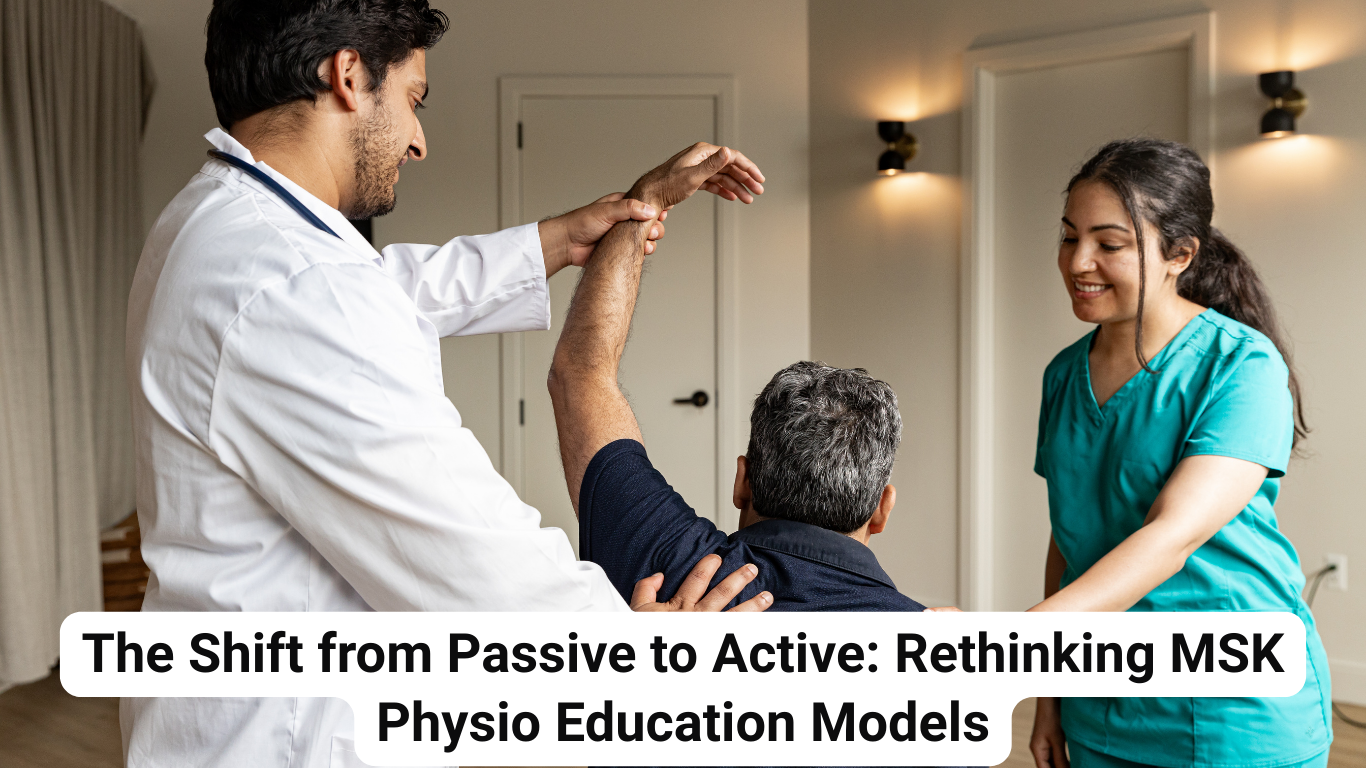There are no items in your cart
Add More
Add More
| Item Details | Price | ||
|---|---|---|---|

Physiotherapy is no longer just about treating pain—it’s about empowering movement, preventing injuries, and enhancing performance. Within this evolving landscape, Musculoskeletal Physiotherapy for Physiotherapists is undergoing a major shift. The traditional model of passive care, where patients relied solely on hands-on treatment, is gradually being replaced by an active, patient-centered approach that focuses on rehabilitation, prevention, and long-term outcomes.
This change is not only transforming clinical practice but also reshaping how future physiotherapists are educated. For students and professionals, understanding this shift from passive to active care is essential in mastering modern Musculoskeletal Rehabilitation for Physical Therapists.
Historically, physiotherapy training emphasized passive care techniques such as joint mobilization, massage, and stretching. These methods often provided immediate relief but rarely addressed the root cause of pain or dysfunction. For example, patients dealing with chronic back pain might feel better temporarily after manual therapy but often returned with the same issues weeks later.
When applied as the sole strategy, passive care may limit progress, especially in Musculoskeletal Rehabilitation for Chronic Pain Relief. Research shows that without patient involvement, outcomes are often short-lived. Patients need more than symptom management—they need the knowledge and skills to take control of their recovery.
This is where the demand for musculoskeletal rehabilitation techniques rooted in active participation has grown. The evidence is clear: long-term improvements in pain, strength, and mobility occur when patients are active partners in their care.
The modern educational shift emphasizes active rehabilitation, focusing on movement, exercise, and functional retraining. This approach teaches physiotherapists to not only treat symptoms but also guide patients through recovery and prevention.Key components of this active model include:
The shift toward active care doesn’t stop at treatment—it extends to prevention and performance. Today’s physiotherapists are expected to help individuals avoid injury and maximize physical performance.
Modern education models must also prepare physiotherapists to work with diverse patient groups. Two areas gaining attention in MSK training are pediatrics and chronic pain.
The next generation of physiotherapists will be defined by their ability to integrate active strategies into every aspect of care. To achieve this, education must evolve in several ways:
The transition from passive to active models in MSK physiotherapy is more than just a trend—it’s a necessary evolution in both practice and education. Passive care provides comfort, but active rehabilitation ensures resilience, prevention, and performance.
By integrating musculoskeletal rehabilitation techniques into teaching, physiotherapy programs can produce clinicians who are future-ready—equipped to handle everything from musculoskeletal rehabilitation for pain management to performance enhancement and pediatric care.
In the end, the real measure of success in physiotherapy education is not how well we treat symptoms, but how effectively we empower patients to move, perform, and live without limitations.
Passive physiotherapy involves treatments done to the patient, such as massage or mobilization. Active MSK physiotherapy emphasizes movement, exercise, and patient participation, which leads to better long-term outcomes.
Musculoskeletal Rehabilitation for Chronic Pain Relief helps patients rebuild strength, improve movement, and manage pain through graded activity and education, rather than relying only on short-term manual therapy.
MSK physiotherapy workshops provide hands-on experience in designing active treatment plans, blending manual skills with active rehabilitation strategies, and applying knowledge to real-world patient cases.
Yes. Musculoskeletal Rehabilitation for Performance Enhancement helps athletes and active individuals improve biomechanics, prevent injuries, and enhance strength and endurance for peak performance.
Absolutely. MSK physiotherapy for pediatric patients uses age-appropriate, playful, and safe techniques to correct posture, support growth, and prevent sports-related injuries in children and adolescents.